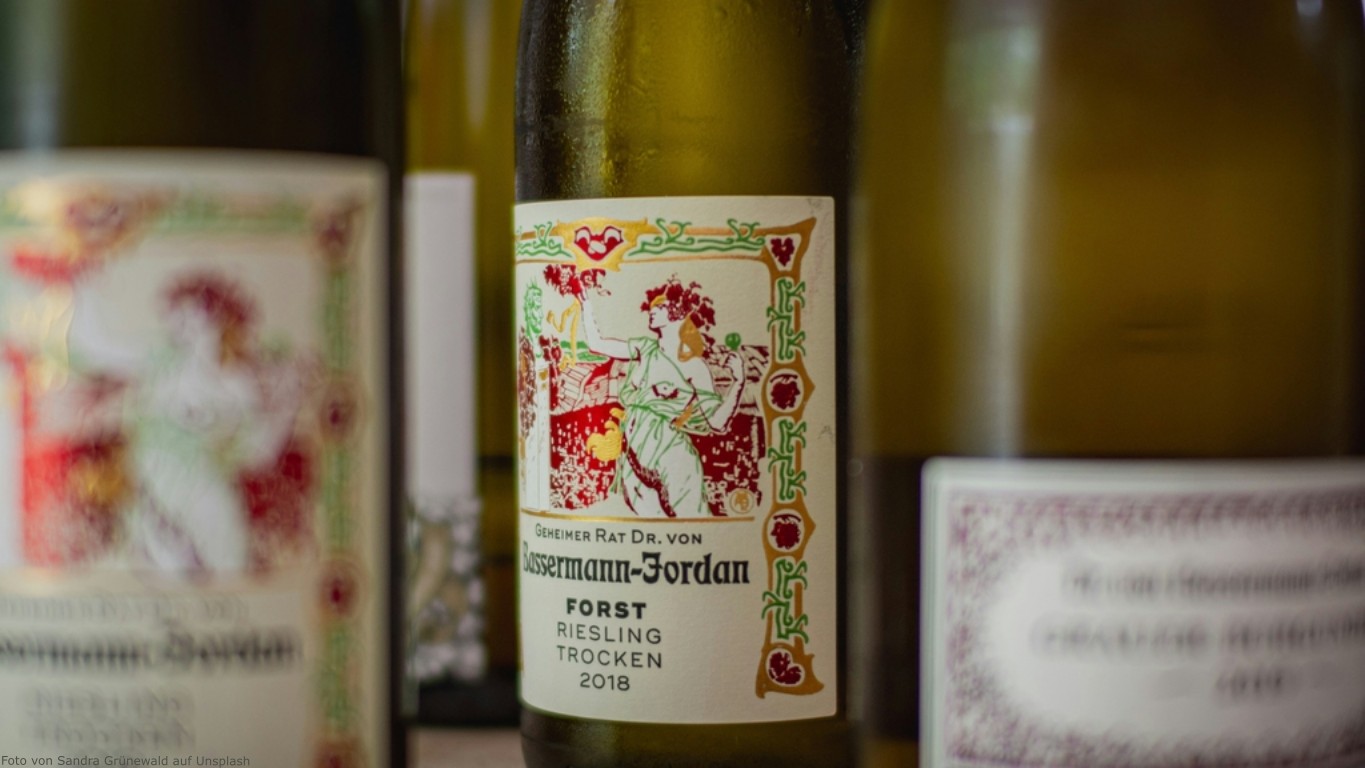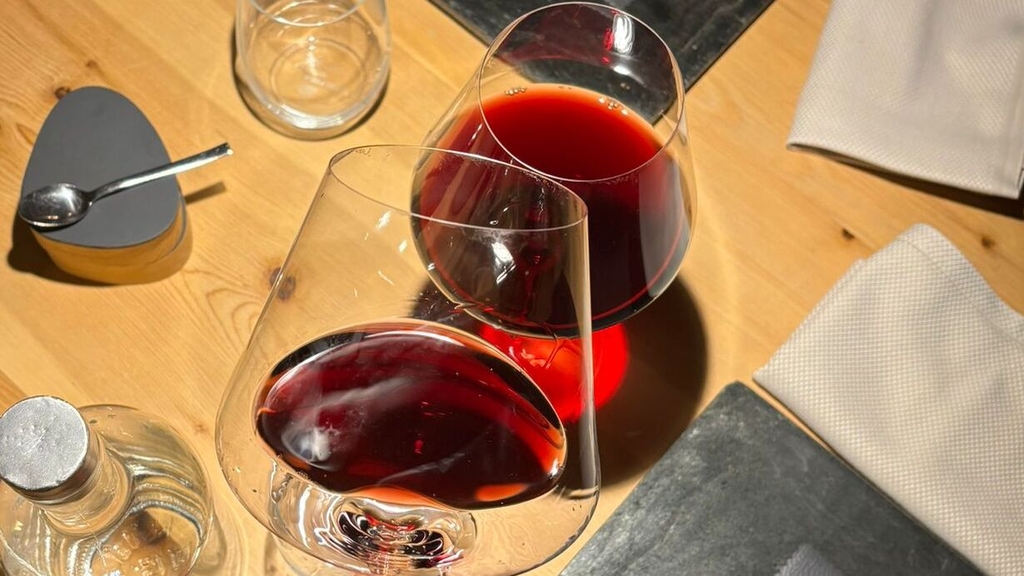How to read a German Riesling Label
German Riesling - How to read and understand the labels

German Riesling is renowned for its versatility and aromatic complexity. To choose the best bottle, understanding the German Riesling label is essential.
How to read a German Riesling Label
German Riesling wines are famous for their high quality and wide range of styles, from dry to sweet. However, reading a German wine label can seem daunting at first. The good news is that once you understand a few key terms and the two main facets, you’ll be able to choose the perfect Riesling with confidence. This guide will break down the essential information you need to know when reading a German Riesling label.
Sweetness Levels: Dry, Off-Dry, and Sweet Wines
The first thing you may look at on a German Riesling label is the indication of sweetness. Rieslings can vary from very dry to very sweet, and the label will often tell you which style you’re getting. Here are the most common terms:
- Trocken: This means dry, indicating that the wine has minimal residual sugar. These wines are crisp and refreshing, with a sharp acidity.
- Halbtrocken: Also known as off-dry or semi-dry, this style has a touch of sweetness balanced by acidity, making it very food-friendly.
- Feinherb: A less formal term, often used for wines that are slightly sweeter than halbtrocken but not fully sweet.
- Süß or Lieblich: These terms denote sweet wines, ideal for pairing with desserts or spicy foods.
Knowing these terms helps you pick a Riesling that suits your taste, whether you prefer something crisp or something sweeter.
Quality Categories: The German Wine Classification
In the German wine classification system, the following terms represent different quality levels:
- Landwein: This is a step above table wine, typically regional, and subject to fewer regulations. Landwein is often a straightforward, everyday wine.
- Qualitätswein: A higher classification than Landwein, Qualitätswein must come from one of Germany’s 13 official wine regions and meet specific standards regarding grape ripeness and production methods.
- Prädikatswein: This is the highest level of German wine classification, indicating superior quality. Prädikatswein is further divided into subcategories based on the ripeness of the grapes at harvest, such as Kabinett, Spätlese, Auslese, and beyond, with increasing levels of sweetness and richness.
- VDP: The Verband Deutscher Prädikatsweingüter (VDP) is an association of top-quality wine estates. While technically under the Qualitätswein category, VDP wines adhere to stricter standards concerning both grape quality and regional specifications. VDP wines include classifications like Gutswein, Erste Lage, and Grosses Gewächs (GG), which signify regional and vineyard-specific quality levels.
These classifications provide a roadmap to understanding the quality and style of German wines, from simple and everyday to world-class offerings.
What does "Kabinett" mean?
Now that we've read about the two main facets, we can dive a little deeper. Specifically in the last two quality categories: Prädikatswein and VDP.
German Riesling is also classified based on the ripeness of the grapes at harvest, which impacts the wine's flavor and sweetness. The Prädikat system is used to categorize the wines based on this ripeness level. Here are the main categories:
- Kabinett: Made from fully ripe grapes, Kabinett wines are typically light, low in alcohol, and offer a fresh, clean taste. They have a sweetness level of 67-82 Oechsle (148–188 g/L sugar).
- Spätlese: Meaning "late harvest," Spätlese wines are made from grapes that were left on the vine longer, resulting in a richer, more concentrated flavor with a sweetness level of 76-90 Oechsle (172–209 g/L sugar).
- Auslese: These wines are crafted from selected, very ripe grapes, often with a noticeable sweetness. They tend to be fuller-bodied and more intense, typically with a relatively high amount of alcohol and a sweetness level of 83–110 Oechsle (191–260 g/l sugar).
- Beerenauslese: Translating to "berry select harvest," Beerenauslese wines are crafted from grapes that have been affected by noble rot, concentrating the sugars to create a sweet, luscious dessert wine. These grapes are picked at high sugar levels, between 110-128 Oechsle (equivalent to 260+ g/l sugar), making them rare and often sold in smaller, half-bottle sizes.
- Trockenbeerenauslese: Meaning "dry berry select harvest," these wines are made from dried, raisin-like grapes that are left on the vine. With very high sugar content, picked between 150-154 Oechsle, Trockenbeerenauslese wines are intensely sweet.
- Eiswein: Ice wine is made from grapes that freeze naturally on the vine and are harvested while frozen, typically during the early hours of the morning or during the night. When pressed, these grapes yield a concentrated, sweet juice. Eiswein is picked at sugar levels between 110-128 Oechsle (around 260+ g/l sugar).
On the other hand, VDP wines follow a unique classification system that encompasses both sweet and dry styles. One of the advantages of the VDP system is its additional layer of classification based on the specific location where the grapes are grown, similar to the regional distinctions found in Burgundy.
The highest levels of these classifications are reserved for the finest vineyards and smallest, top-quality grape-growing areas. A key point to remember is that VDP Grosses Gewächs wines are always dry and are labeled as Qualitätswein and Trocken (“dry”), though they can also include the Prädikat terms like Spätlese or Auslese to indicate ripeness.
VDP quality levels
- Gutswein: This translates to “house wine” and is labeled with either the winery's proprietary name or a regional or village designation, alongside the "VDP" mark.
- Ortswein: Known as "local vineyard wine," these wines come from superior vineyards and are labeled with the name of the specific vineyard and "VDP.Ortswein."
- Erste Lage: This refers to "first site" wines, which are labeled with a vineyard name and often feature the numeral "one" next to a grape cluster logo embossed on the bottle. These wines are marked as "VDP.Erste Lage."
- Grosse Lage/Grosses Gewächs (GG): This is the top tier, designating the most exceptional vineyards and parcels in Germany. Wines from these areas are labeled "VDP.Grosse Lage" or "VDP.Grosses Gewächs".
German Riesling labels might look complicated at first, but they contain all the information you need to make an informed choice. The hierarchy helps wine lovers identify the origin and quality of the wine, offering more insight into what’s in the bottle. Cheers 🍷
Cheers 🍷


